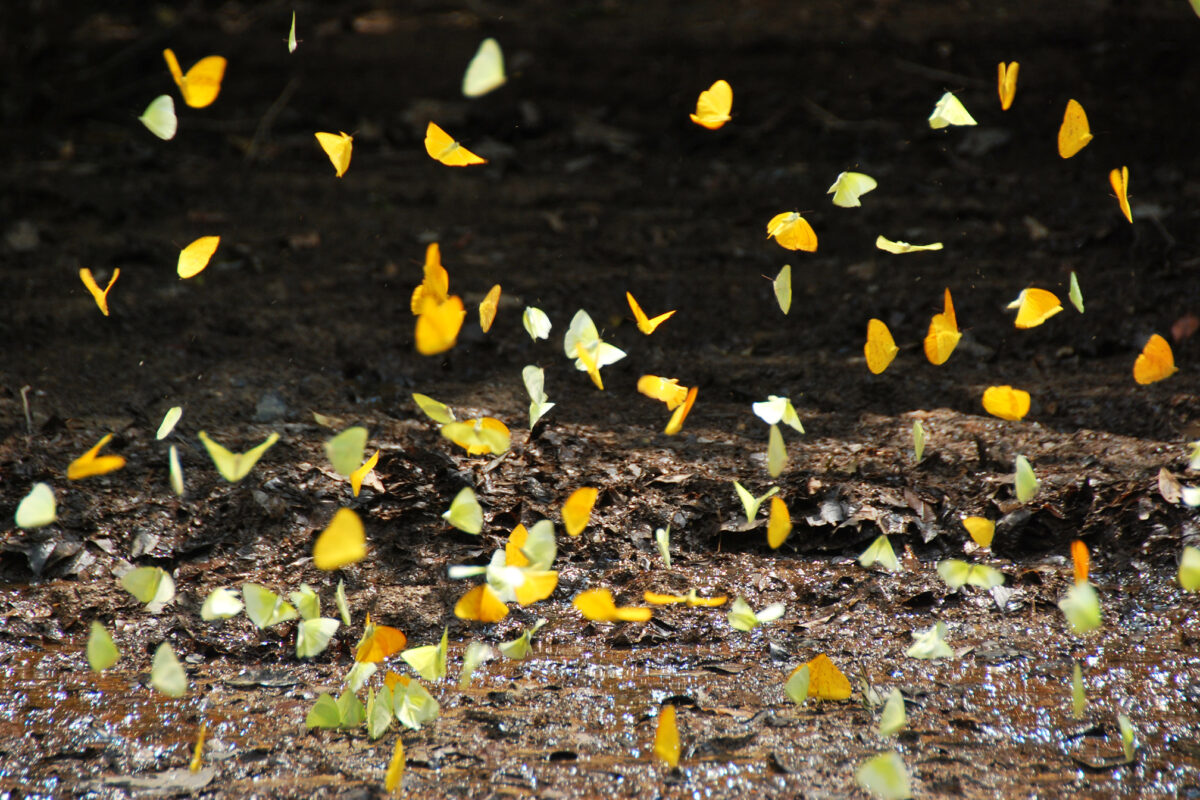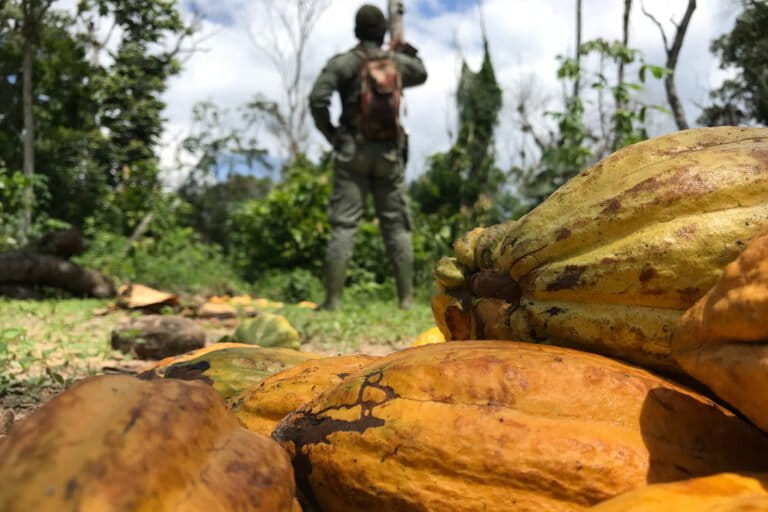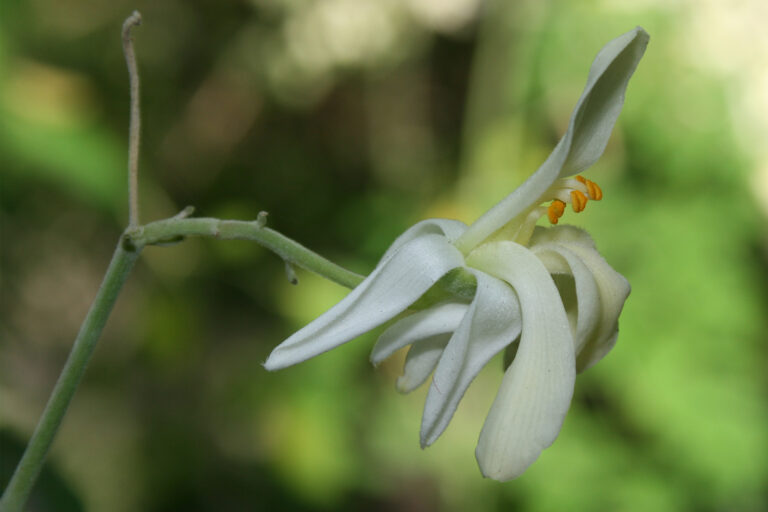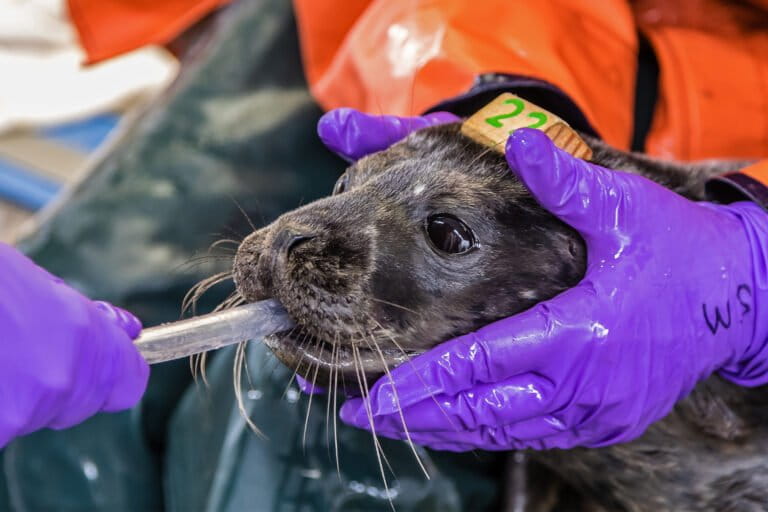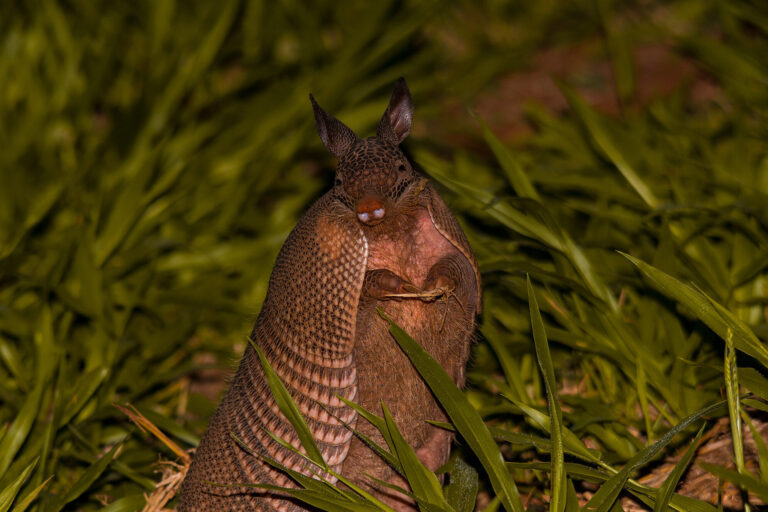- Very little is known about the Cuban greater funnel-eared bat (Natalus primus), an extremely rare species known from just a single remote cave in western Cuba.
- Now, following a survey that involved bright nail paints to mark individual bats, researchers have estimated that there are fewer than 750 Cuban greater funnel-eared bats in the the cave locally known as Cueva la Barca.
- What the population number means for the species is, however, hard to say at the moment because of the lack of any previous estimates, researchers say.
One of the world’s rarest bats, the Cuban greater funnel-eared bat, is known from just a single remote cave in the island’s west. The bat was in fact thought to be extinct until researchers rediscovered several individuals in the cave, locally known as Cueva la Barca, in 1992. Nearly three decades later, very little remains known about the species.
But now, following a survey that involved nail paint to mark individual bats, researchers have estimated that there are fewer than 750 Cuban greater funnel-eared bats (Natalus primus) in the cave. This is the first ever scientific estimation of the species’ population size, researchers say.
“It was previously believed, based on visual sightings, that there were less than a few thousand Cuban greater funnel-eared bats in the cave,” Jose Manuel De La Cruz Mora, a bat specialist at Cuba’s Natural History Museum of Pinar del Río and a Segré-EDGE Fellow at the Zoological Society of London (ZSL), told Mongabay in an email.
Overall, though, there is very little research on the species, De La Cruz Mora said, likely because there are very few researchers specialized in the ecology of bats in the region. There’s also the added challenge of counting and studying the last known population of a species.
But there was an urgent need to figure out how many bats lived in the cave as a first step, De La Cruz Mora added. The Cuban greater funnel-eared bat is currently listed as vulnerable on the IUCN Red List, and the researchers wanted to see if the risk category was accurate for the species.

To get this number, the researchers decided to use the mark-recapture method, which involves capturing some individuals of a population, marking them in a harm-free way, releasing them, then capturing more individuals again. The number of marked individuals that are recaptured can then be used to estimate the population size.
But for a mammal species that’s small, fragile and known from just one population, capturing and marking can be extremely daunting. So the team decided to get creative: they marked individual bats’ claws with unique combinations of four different bright colors of nail paint.
“We decided to use this method because it is harmless, effective and temporary, which makes it perfect for our work and the species,” De La Cruz Mora said. “It was time consuming giving each bat an individual manicure, but it’s an incredible privilege to get up-close to this amazing animal — and to discover more about them made all those hours painting their nails worth it.”


Working with the bats isn’t for the faint-hearted, though. Getting to Cueva la Barca, located inside Guanahacabibes National Park near the western tip of Cuba, involves a long trek through thick bushes, with scorpions, spiders and snakes lurking along the way. The cave itself is dark, hot and humid, making it an especially challenging environment to work in. “N. primus is also a small mammal species that should not be handled for any lengthy periods of time — so we put a threshold in of five minutes per animal,” De La Cruz Mora said.
In the end, during their surveys in January and February of this year, the period when the bats aren’t reproducing, De La Cruz Mora and his colleagues managed to mark 53 of the 67 bats they first captured. Based on subsequent recaptures of the bats, the researchers estimated that there are fewer than 750 Cuban greater funnel-eared bats living in the cave.
What this number means for the species is, however, hard to say for now.
“So far, we only know that the species conservation status is not favorable, however, the absence of previous estimations limits our ability to compare and identify any patterns in the population (increasing, decreasing or stable situation),” De La Cruz Mora said.

Having a small population and being limited to a single cave, however, does put the bat species under pressure from a variety of threats, including habitat destruction, natural disasters like hurricanes, and climate change-induced rise in cave temperature. But without enough ecological information on the species, conservation plans are difficult to develop, De La Cruz Mora said.
The team now plans to establish a long-term monitoring program to gain more information on the bat’s ecology and behavior by using non-invasive technologies such as infrared video cameras and audio recorders.
“We also plan to establish conservation campaigns in the National Park Guanahacabibes and the Museum of Natural History to increase the knowledge of the species among schools, universities, research centers and the general public,” he said. “The idea with these campaigns is to learn more about the importance of bats and involve them into our efforts to protect important species in the west of Cuba.”
Banner image of a Cuban greater funnel-eared bat by Carolina Soto Navarro/ZSL.



